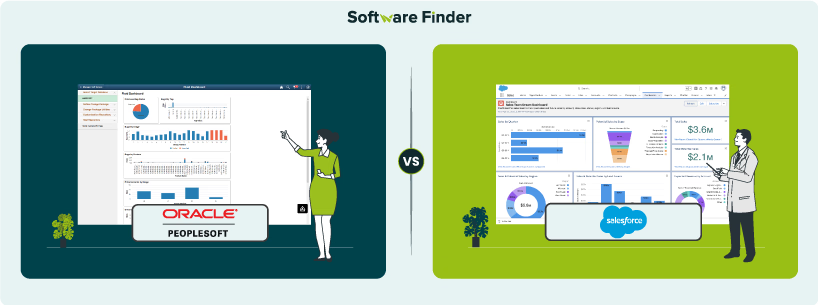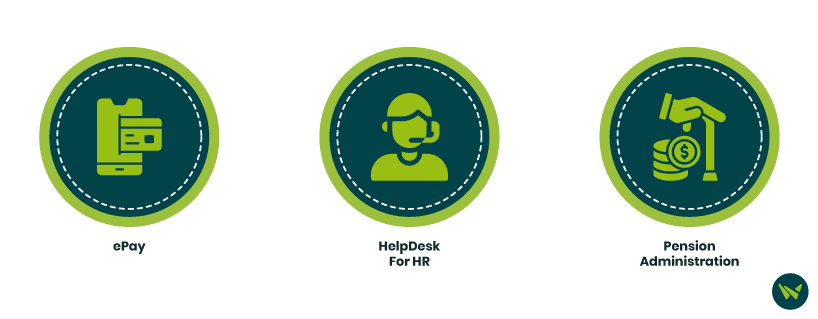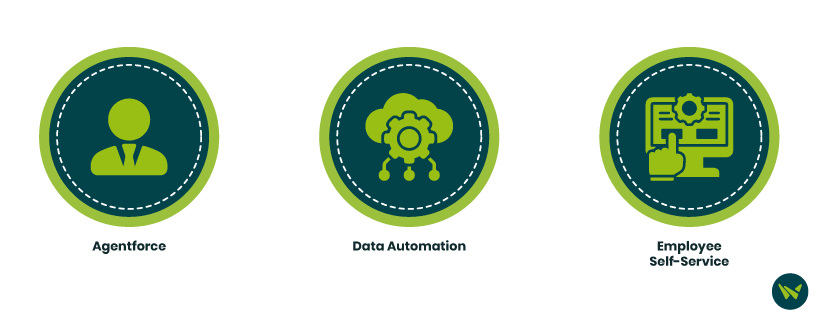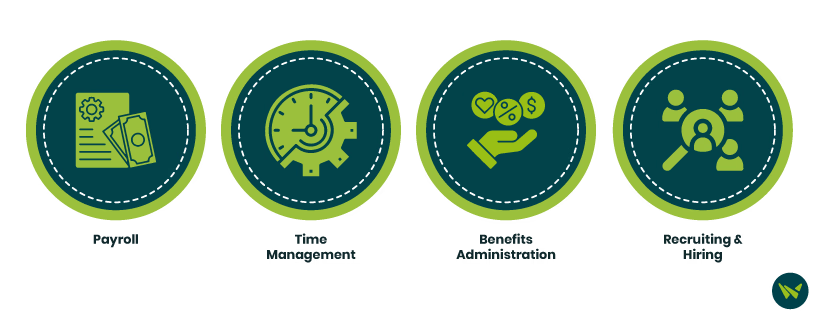
How do you choose the right HR software when your workforce demands efficiency, engagement, and scalability? The stakes are high. The wrong platform can lead to clunky workflows, limited insights, and frustrated teams.
PeopleSoft and Salesforce are two powerhouse solutions that bring very different strengths to the HR table. This comparison breaks down what each platform offers to help you make the right choice.
PeopleSoft’s human capital management (HCM) system is designed for large enterprises, excelling in areas like effective payroll management, benefits, and talent management with powerful, enterprise-level capabilities.
Salesforce, best known for its customer relationship management (CRM) success, extends into HR through Work.com, focusing on employee engagement, productivity, and flexible workflows.
In this blog, we will compare PeopleSoft vs Salesforce by exploring their HR capabilities, pricing, pros/cons, and scalability to help you find the right fit for your organization.
Feature | PeopleSoft | Salesforce |
Payroll | Global payroll compliance | Real-time compensation updates |
Time Management | Rules-driven automation | Visual time analytics |
Benefits Administration | Consistent year-round processing | Streamlined approvals and changes |
Recruiting And Hiring | End-to-end recruitment workflow | AI-powered recruiting module |
Pricing | The price starts at $200/user/month | The price starts at $75/user/month |
PeopleSoft, developed by Oracle, is a comprehensive enterprise resource planning (ERP) solution designed to address complex business and HR requirements for organizations of all sizes. With more than 30 years of innovation, PeopleSoft provides a robust suite of applications that help streamline HR operations and increase productivity. It offers features like payroll management, talent management, employee benefits, workforce analytics, and more.
Ideal for organizations with complex HR structures, PeopleSoft is deployed on-premises or in Oracle Cloud, giving businesses flexibility in how they manage their systems while ensuring enterprise-grade reliability and performance.
Standout Features Of PeopleSoft

- ePay: The software offers ePay, which enables employees to review paycheck information, including earnings, taxes, deductions, and net pay distribution, through self-service portals
- HelpDesk For HR: This feature manages employee retirement benefits, ensuring accurate tracking and administration of pension plans
- Pension Administration: It provides a centralized platform for employees to seek assistance with HR-related inquiries, streamlining issue resolution and improving service delivery
Pros And Cons Of PeopleSoft
Pros:
- Efficient platform to track work time, billable hours, vacations, and time-off
- Reports can be marked into the ‘My Favorites’ list for convenient access
- Centralized platform for payroll management, salary information, and mileage reimbursements
Cons:
- Sometimes, the system lags during invoice processing
- The job roles and descriptions are not organized by job functions
Salesforce is a cloud-based software platform that extends far beyond its renowned CRM capabilities. It empowers HR teams to deliver smarter, more personalized employee support and streamline HR operations. With its robust suite of native apps and integrations, Salesforce Engage software enables organizations to manage the entire employee lifecycle. This includes onboarding, case management, payroll, benefits, and employee engagement within a unified environment.
Standout Features Of Salesforce

- Agentforce: Salesforce uses a conversational artificial intelligence (AI) agent to simplify HR support, allowing employees to manage tasks like updating profiles, requesting paid time off (PTO), and changing direct deposit details through natural, chat-based interactions. This improves the employee experience and reduces pressure on HR teams
- Data Automation: Gain a complete view of employee data, events, and milestones to personalize support and boost engagement. Use smart automation to route employee requests to the right person or team, helping resolve issues faster and more accurately without manual effort. All data is integrated across the Salesforce platform to ensure consistency and real-time insights
- Employee Self-Service: Empower employees with a self-service portal that delivers tailored support using trusted data like case history and employment records. Guide each user with relevant content, step-by-step guidance, and next best actions for quicker issue resolution and a more personalized experience
Pros And Cons Of Salesforce
Pros:
- Powerful AI automation reduces manual work
- Intuitive tool for tracking PTO requests
- User-friendly interface with reliable performance
Cons:
- Setup requires time and dedicated resources
- Extensive features may overwhelm new users


PeopleSoft offers more flexible payment options, including monthly or annual subscriptions, with pricing starting at $200/user/month. This makes it a more cost-effective choice upfront, especially for organizations that already maintain on-premises infrastructure.
Disclaimer: The pricing has been sourced from third-party websites and is subject to change.
Salesforce HR Service pricing starts at $75/user/month for the ‘HR Console’ and $4/login or $8/member monthly for the ‘Employee Portal’. Native apps like Sunrise HCM or BiznusSoft HR on AppExchange have separate pricing, which varies by vendor and features included.
Disclaimer: The pricing is subject to change.
Based on its strengths in critical HR areas, PeopleSoft may be the stronger choice for large enterprises looking for deeply integrated, end-to-end HR capabilities. Its built-in modules for payroll, time management, and recruiting are designed to handle complex global operations with precision and scalability. For organizations with rigid compliance needs and extensive HR infrastructure, PeopleSoft delivers unmatched reliability.
However, Salesforce shines in flexibility, ease of use, and modern user experience. Its AppExchange ecosystem offers affordable, modular solutions like flair and BiznusSoft HR that support growing teams without overwhelming them. If your organization is already using Salesforce and prefers lightweight, cloud-native tools that simplify HR processes while boosting employee satisfaction, Salesforce is a smart and scalable choice.
Ultimately, both platforms offer distinct advantages. The right software depends on your team’s size, budget, existing systems, and future growth plans. Evaluate your specific HR needs carefully, and you’ll find the best fit between enterprise power and cloud agility.
Still unsure? Contact us now, and our research expert can guide you to make the right choice.
